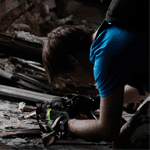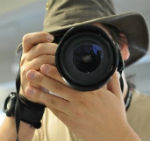Depending how old the light meter is, you find 3 type of sensors: Selenium, Cadmium Sulfide and Silicon Blue.
Selenium were the first, and they don't need a battery, but age and light meters with Selenium sensors are usually out of spec today - often quite badly.
CdS were popular around the 60s, they need batteries but age less, however they take a while to adjust to lower light levels - you see that on cameras with a match-needle exposure system, the needle takes a few seconds to go down from a brighter exposure.
Silicon Blue cam out around the 70-80s and those are what is common today. Normal Silicon sensors however have a spectral response that is way different than film, so for use in exposure meters they need a blue filter (hence the name Silicon Blue) to see light in a similar spectrum as film does. If you buy a Silicon sensor check its spectral response and compare it to some film.
About how to meter different light, if you measure reflected light of an Object, you can either have the bare sensor pointing out or use a lens to measure a narrowed area (those are then called spot meter). For incident light metering, a diffuser is used, either a flat disc or a half dome depending of you want sidelight to get into the calculations or not. Many light meters that offer both have a sliding dome, others like the Minolta Autometer series have interchangeable covers with pegs that tell the meter what accessory is mounted (and adjust the meterings corresponding).
Basic features of light meters is measure the light and display the light level (Exposure Value, EV) and have a rotating scale to show the shutter speed / exposure combination. More advanced one allow you to enter film speed, shutter speed or aperture (Shutter speed is more common) and output depending on that the shutter speed or aperture. Often a bar graph is included. Often you can take more readings and then average them (with all readings displayed on the bar graph).
Here are two manuals for light meters I own, the Gossen Digisix
http://www.gossen-.../ba_digisix_gb.pdf (a small model that does the basic stuff you want a light meter to be able to) and a Minolta Autometer IV
http://www.butkus...._auto_meter_iv.htm (old, but great features and accuracy). Maybe you find your middle ground between them.
What I see as the biggest problem is to get an accurate exposure over a wide range - the Minolta for example has a 22 stop range with 0.1 stop precision. But good luck with your project.






 . Also, should I have the sensor exposed so that it directly sees the light, or should I put it behind a diffuser?
. Also, should I have the sensor exposed so that it directly sees the light, or should I put it behind a diffuser?


